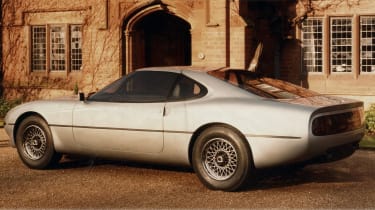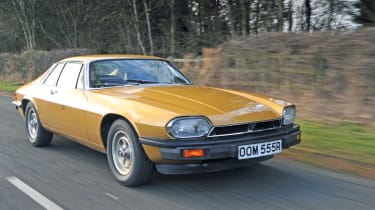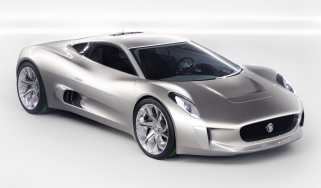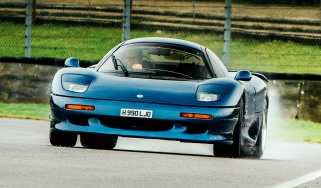Jaguar XJ41 – Dead on arrival
The blighted ’80s ‘F-type’, the demise of which led to the creation of the Jaguar XK8 and launched a new era for Aston Martin

Project XJ41, initiated in 1980 and signed off for production two years later, sounded very promising for Jaguar. Unlike the squidgy, V12-powered XJ-S, this would be a proper sports car with a straight-six engine, double-wishbone suspension and the honour of being the last car to receive the blessing of company founder William Lyons before his death in 1985, anointed on a post-retirement visit to the design studio when he spotted Keith Helfet’s elegant styling proposal and declared, ‘That’s the Jaguar.’ No wonder it was always informally referred to as ‘the F-type’. Unfortunately, soon after Lyons left this world, project XJ41 (and its convertible sister, XJ42) slipped inexorably into development hell.
The first problem was that Jaguar had a tiny engineering department working to budgets no rival would entertain. It was once rumoured that Mercedes spent the same developing the new ‘multi-link’ rear axle of the 190 as Jaguar mustered for the whole of the brand new XJ40, and it was this core saloon project that sucked their slender resources in the middle ’80s, leaving the new sports car on the back burner.
When the all-new XJ eventually went on sale in 1986, two years behind schedule, attention turned to XJ41 and product planners began to worry that, six years after its inception and with a public reveal now sliding towards the dawn of the ’90s, the F-type was going to be outgunned. So, as the project wore on, XJ41 got a twin-turbo, 330bhp version of the straight-six to give it more power, and a four-wheel-drive system to harness that power, and airbags to meet forthcoming US rules, and a targa top to make it seem more versatile, and a wider body to accommodate all these new features.
As a result, the XJ41 became an object lesson in what NASA would call ‘mission creep’ as the lithe, normally aspirated sports car ballooned into an over-specified, 1800-kilo monster. Jaguar made frantic attempts to bring things to order, binning the four-wheel drive and the twin-turbo engine (only to reinstate the latter in another moment of dithering), but it was too little, too late. When Ford bought Jaguar in late 1989 it started a detailed review of the company’s plans and, in March 1990, ten years after the project had been initiated, the F-type was killed off. One of 23 XJ-S-based engineering mules was saved from the scrapyard and lives on in Jaguar’s heritage collection, alongside two of the visually representative prototypes built by Karmann in 1989.

However, the legacy of XJ41 is bigger than that. When the project died, Tom Walkinshaw, the wily TWR boss who ran Jag’s motorsport efforts, asked his in-house designer to take the essence of the XJ41 design and apply it to the underparts of the smaller, narrower XJ-S, and then tried to sell this cost-effective scheme back to Jaguar. When they said no, Walkinshaw asked the designer to turn the Jag proposal into an Aston Martin. The project was approved as a new ‘entry level’ model, and we ended up with the DB7.
Meanwhile, Jaguar realised there was potential in a rehashed XJ-S chassis, which led to the XK8 of 1996, and the success of that car allowed the creation of its aluminium-shelled replacement, the 2005 XK, the hull of which was later cut down and adapted so that, finally, in 2013, Jaguar got to launch a car badged F-type. And the designer overseeing these last two cars was Ian Callum, whose career took off after he created the Aston DB7 using the design themes of the ill‑fated project XJ41.






